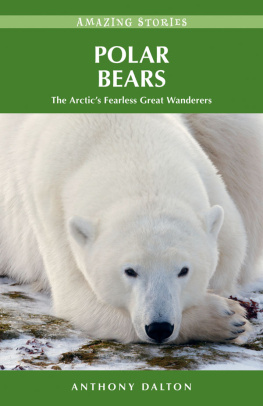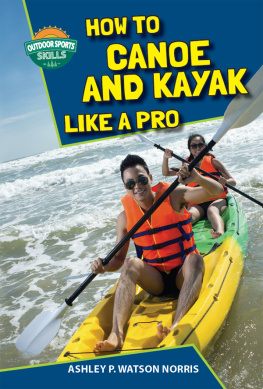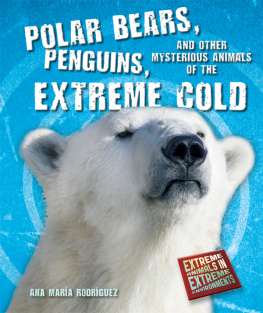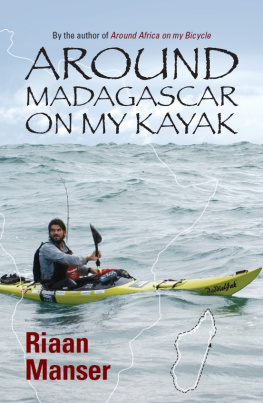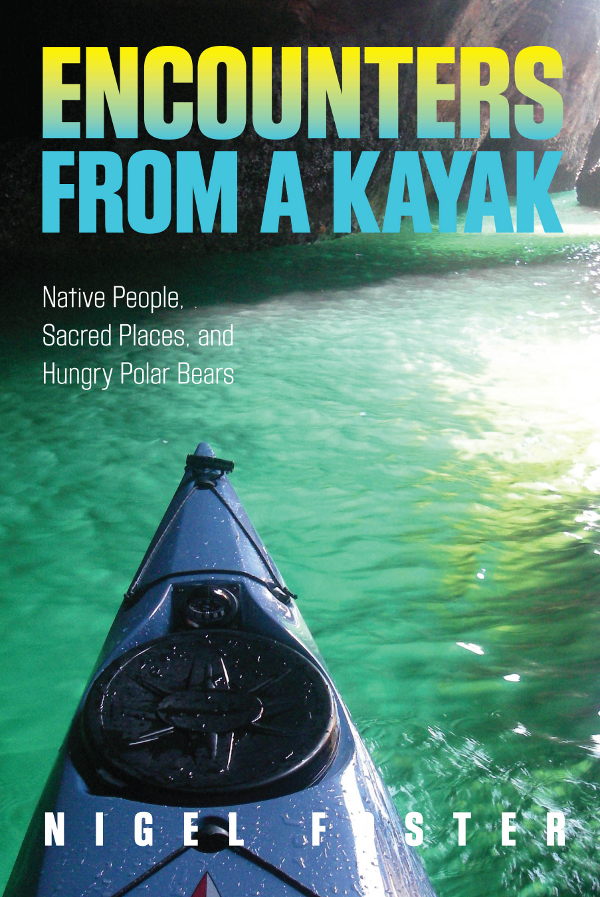

Copyright 2012 Nigel Foster
ALL RIGHTS RESERVED. No part of this book may be reproduced or transmitted in any form by any means, electronic or mechanical, including photocopying and recording, or by any information storage and retrieval system, except as may be expressly permitted in writing from the publisher. Requests for permission should be addressed to Globe Pequot Press, Attn: Rights and Permissions Department, PO Box 480, Guilford, CT 06437.
FalconGuides is an imprint of Globe Pequot Press.
Falcon, FalconGuides, and Outfit Your Mind are registered trademarks of Morris Book Publishing, LLC.
All photos by Nigel Foster unless otherwise noted.
Map created by Melissa Baker Morris Book Publishing LLC
Library of Congress Cataloging-in-Publication data is available on file.
ISBN 978-0-7627-9015-9
Kayaking offers ample time to observe ones surroundings, and also plenty of time for idle speculation. So its not surprising that all manner of ideas get airtime during a kayaking excursion. For me this airtime for ideas has turned variously into a better harmony with wind and waves, into new paddle and kayak designs, into how to better teach kayaking technique, into stories for winter evenings.
On a deeper level Ive had time enough to ponder what I am and how I fit into my surroundings, or how best to try. Seldom otherwise is my mind for long periods almost entirely open for deep thought. Such periods of thought are punctuated by encounters, during which the focus is entirely outward.
Taking time to explore new places delights me, but small events often fascinate me most. These may only last a few moments or might not even be significant without the benefit of hindsight after multiple visits to the same place.
Such is the eye-to-eye connection with a fulmar gliding past just a few feet away. Its something Ive seen so many times, yet with each sighting extra detail is added to my mental collage. A story can develop slowly like this, aggregating over the years until, with the positioning of a pivotal fragment, it becomes complete.
Different is the experience of first being scared and then emboldened by curiosity to approach a large creature wallowing in the swell, only to discover with relief that it was just a wooden cable reel. Such an encounter is probably a one-off, never to be repeated.
Sometimes the most noteworthy moment of a kayaking trip comes not from being on the water at all but from talking with someone on the beach.
Many of my experiences, like these examples, could be grouped into the four general categories Ive chosen for this book: creatures, people, places, and flotsam and jetsam.
So I collect stories. If each story were a bead, then my kayaking would be the thread that strings them together, and like that thread it remains mostly invisible. As with a string of beads, the magic of a stray bead is accentuated by the threading; these beads belong together.
I like to think of stories as works in progress that shift their position and their emphasis, rounding and polishing themselves like pebbles on a beach to expose previously hidden facets or sometimes to reveal a gem. Such is the way of waves produced by a storm. In time and with distance, the irregular and chaotic wild lop becomes filtered out to reveal the balanced rhythm of ocean swell. So too is the way of stories in the oral tradition of epic and song, where the irrelevant and superfluous are filtered out until only the best words remain to tell the taleand only the best story remains to be told.
Each story here is complete, yet as with the multiple images of fulmars, the collaboration of each story with all the others weaves a more complex pattern. Revelations early in the Encounters collection add substance to later stories, and facets from later stories recall earlier ones. I hope this will bring a sense of completeness and familiarity. My wish is to reveal the essence of who I am through what I enjoy about kayaking.
Nigel Foster, 2012
Amusing, scary, repulsive, puzzling, curious; creatures can make me stop what Im doing to watch or make me anxious to escape.
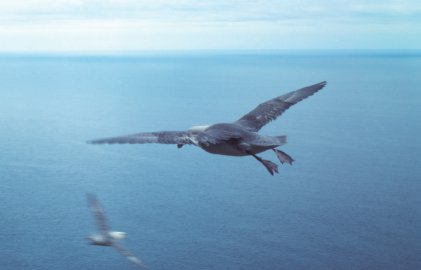
In the shallow water of the Florida Keys, transparent needlefish skate the wavelets to evade the jaws of predatory fish that feed on them from below. A gleaming bright streak of silver erupts from the water beside me: A barracuda has launched itself from the water along my paddle blade and come to rest across my arms, whacking its silvery body against my face, spreading me with the pungent smell of oily fish. A moment later it flicks itself into the water, leaving me with a distinct aftertaste and badly smeared sunglasses. Bills mouth is agape, having seen the sharp end of the fish.
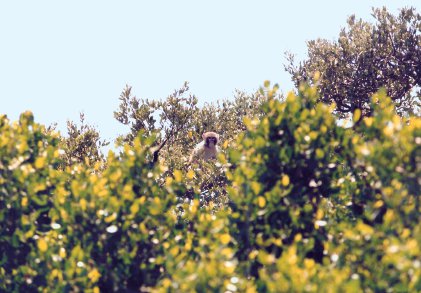
A rhesus monkey watches from the mangroves at Raccoon Key, Florida.
Yes, today the fish are jumping as if waters gone out of fashion. I watch the many splashes on the brightly glaring water now with a wary eye, the sun burning with an intensity that makes me squint behind my sunglasses.
My friends Bill and Ellen and I reach Tarpon Belly Keys. Everywhere are No TRESPASSING signs. These keys were mutilated by developers before the plan to build a road out across the bay was dropped. Now the narrow canals and the white sandy platforms for waterfront houses are gradually vanishing beneath new growth. We pause to eat lunch in the shallow water tucked close beside the mangroves. The coolness of the water is refreshing against my legs. Around us is a horizon of low mangrove trees. The sky appears to push the horizon back to make the sea slope down in every direction. We know one of the mangrove strips must be Raccoon Key. We study the map, study the horizon, figure out which bits of horizon are closer than other bits, and identify our target. The compass makes it easy. Its not so far away, across the shallow water, so we cut straight toward it.
As we approach we see massive white boards with bold red writing in English and Spanish that say No LANDING. Bill explains a little about the place: Theres a colony of monkeys here. People tell stories about how big and fierce they are. Theyre said to pull passing fishermen from their boats and drag them into the mangroves!
Rhesus monkeys on Raccoon Key and on the not-too-distant Lois Key were bred to supply the laboratories of the US Food and Drug Administration. Monkeys were imported in large numbers from India until an export ban was implemented in 1977. A primate in many ways similar to man, the rhesus has long been used in drug and vaccine research, has been launched into space, and was instrumental in the discovery of the blood factor known as Rh (for rhesus) positive and negative. And just recently I read in the New York Times that scientists have managed to successfully transplant the head of one rhesus monkey onto another in a full body transplantor would it be a head transplant?
We pause at the edge of the mangrove. We have no intention of landing, but we do decide to creep, just a little way, into a waterway that weaves between the mangrove trees. Mangroves grow from the water with their spider-leg prop roots branching and reaching ever outward across the shallow water. Theres a gap in the mangroves wide enough for our kayaks, and we paddle through. We discover a tall, straight mesh fence blocking the channel. We are about to turn around here but discover a gap in the fence. We consider for a moment, and then we paddle through the gap. We still havent technically landed on the island, but Im feeling we are now somewhere we shouldnt be.


